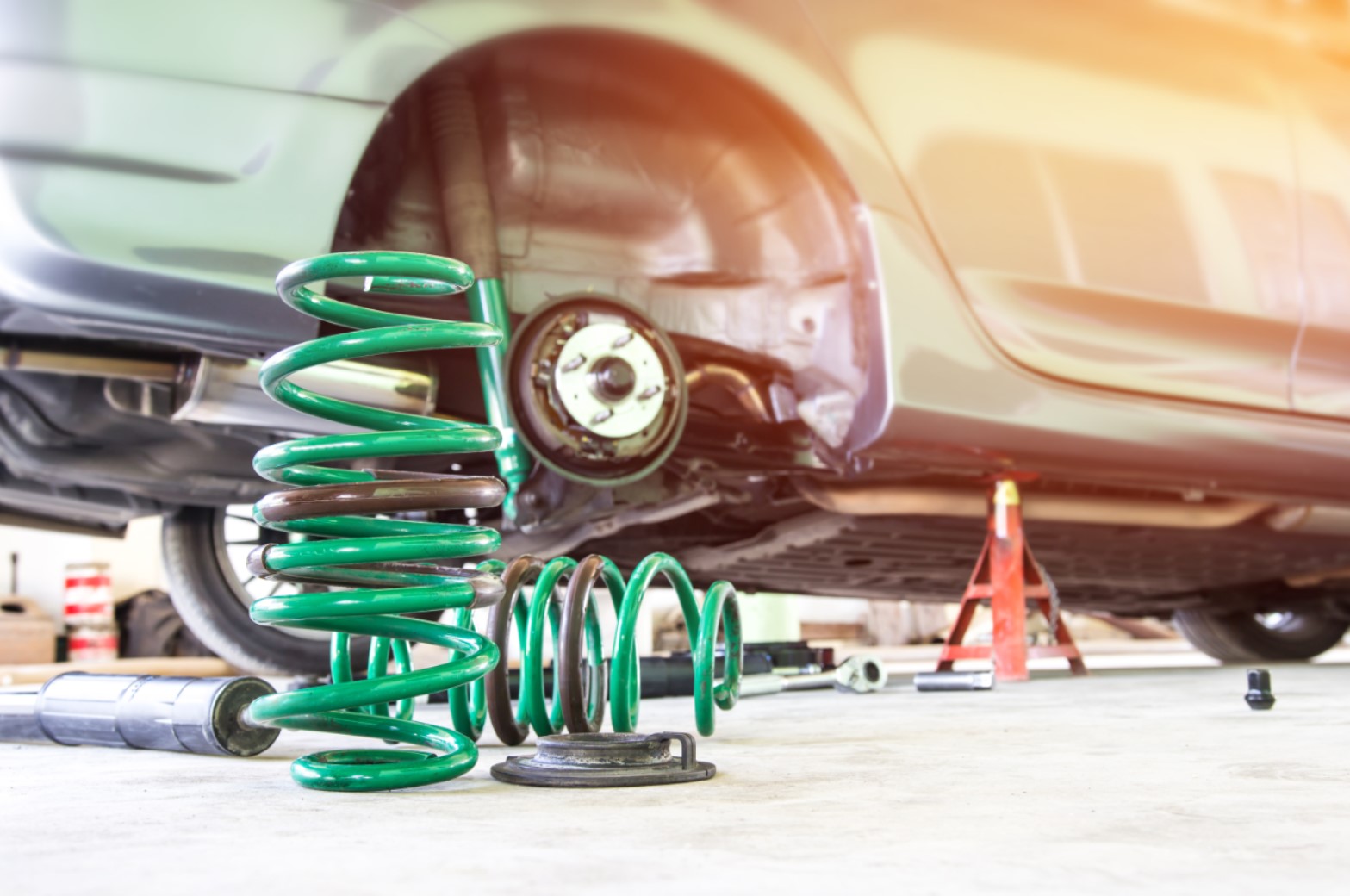Here’s the Difference Between Shocks & Struts

When people talk about suspension in vehicles, they may use the word shocks and struts interchangeably. They are both crucial components of your car’s suspension system, as well as your car’s overall performance, safety, and comfort, but cannot be replaced for one another.
Today, our team at Christian Brothers Automotive is here to provide some clarification on how to tell shocks and struts apart, how they work together to ensure a smooth ride, and what you can do to ensure they stay healthy.
What do Shocks & Struts Do?
Shocks and struts may essentially do the same thing, but they are two different things. Both of them work to dampen the movement of the bounce and swing of your vehicle. This ensures a smooth ride, or smoother ride than it would be, depending on the terrain you may find yourself on. They also help you keep control of the car whenever an emergency maneuver may need to be made, keeping you, your family, and everyone else on the road safe.
What’s The Difference Between Shocks & Struts?
While one of them will be found in every one of your vehicle’s tires, a vehicle will either have a shock or a strut at each wheel, never both. A shock cannot be used to replace a strut and a strut cannot be used to replace a shock. Which one does your vehicle have? Depends on the make and model.
- Shocks: Shocks keep the car from bouncing and are found in simple cylinders. Also referred to as shock absorbers, they are traditionally found on the vehicle’s back wheels. If you didn’t have shocks your car would bounce up and down uncontrollably.
- Struts: Struts are a type of suspension system that has the shock and spring in one single unit. The spring supports the weight and impact of your car, as well as keeps your tires on the ground. Struts are usually found in the front tires of a vehicle.
The major difference between shocks and struts is that a strut is a structural part of the vehicle's suspension system where a shock is not. A strut is also a crucial part of the vehicle's steering system and greatly affects alignment angles.
Why Should I Replace Them?
It’s recommended that shocks and struts should be inspected after 80,000 miles and then every 20,000 miles after that for signs of wear. If you don’t monitor the health of your struts and shocks in your vehicle, you can face a variety of problems including an all-around unpleasant drive.
Bad shocks or struts can lead to:
- Lack of control doing emergency maneuvers
- Vehicle tipping danger
- Increased wear, tear, and damage on tires
If things are seeming more bumpy than usual and causing annoyance while driving, you may want to test your suspension. One tried-and-true way to test your suspension is by completing the bounce test a few times a year. The way you do this is by going to each corner of the car and give it a push and let it go on the bounce upwards. If the shocks or struts are good, the corner of the car will return to level. If it continues to bounce instead, you may need new shocks or struts.
Vehicle Suspension Services at Your Local Auto Repair Shop
If you need help identifying the part of your suspension system that is currently giving you issues or require other services for your shocks or struts, bring your vehicle to one of our local auto repair shops. Whatever problems your vehicle is experiencing, you can rely on our team of certified, trained, and friendly auto technicians to provide you the necessary recommendations based on what is best for your vehicle and your safety.
Searching for local shocks and struts service? Locate your nearest auto shop to schedule your next suspension service today!


[1].jpg)
sunwash-tech-with-customer.png)

